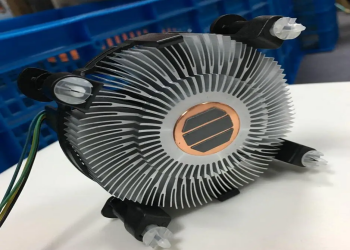
Along with the unceasing development of LED technology, LED lamps are increasingly used in various fields. However, due to the heating problem of LED chips, how to effectively improve the performance of LED lamps has become an important issue. LED lamps have been widely used as an efficient thermal management technology to cool heat sinks. This article will discuss how to use cooling heat sinks to improve the performance of LED lamps, focusing on the implementation methods of cooling heat sinks and their impact on the performance of LED lamps.

Heating issues and impacts of LED lamps
LED lamps generate much heat due to their unique structure and working principle. If this heat cannot be effectively dissipated and controlled, it will cause the temperature of the LED chip to rise, thereby affecting its light efficiency, lifespan and reliability. At the same time, excessive temperature will also hurt the structure and electronic components of the lamp, reducing the performance and safety of the entire lamp. Therefore, effectively controlling the heat generation of LED lamps has become an important research topic.

Implementation method of cooling heat sink
Cooling heat sinks are essential for heat dissipation in electronic equipment. Its basic principle is to transfer the equipment’s heat to the environment through thermal conduction, convection and radiation. In LED lamps, the implementation methods of cooling heat sinks mainly include the following aspects:
- Optimize lighting design
Optimizing luminaire design is one of the critical factors in achieving cooling heat sinks. In the design process of lamps, factors such as the shape, size, material and heat dissipation structure must be considered to achieve the optimal heat dissipation effect. For example, heat dissipation efficiency can be improved by optimizing the design of lampshades and radiators, increasing the heat dissipation area, optimizing heat dissipation channels, and reducing heat accumulation and transfer resistance.

- Application of high thermal conductivity materials
High thermal conductivity materials are another vital factor in achieving cooling heat sinks. In LED lamps, materials with high thermal conductivity commonly include metals, ceramics, and composite materials. Among them, metal materials have better thermal conductivity but are heavier; ceramic materials have the advantages of high thermal conductivity and low weight but have higher costs; composite materials combine the advantages of metal and ceramics and have high thermal conductivity and low weight. Appropriate high thermal conductivity materials can be selected according to actual needs.
- Application of efficient cooling fans
High-efficiency cooling fans are an effective means of cooling heat sinks. In LED lamps, high-efficiency cooling fans can be installed to increase air circulation speed and flow, thereby quickly transferring heat to the environment. At the same time, the heat dissipation effect and noise can be improved by optimizing the design and use of fans.

Use cooling heat sinks to improve the performance of LED lamps
After cooling the heat sink through the above method, the performance of LED lamps can be effectively improved. The specific performance is as follows:
- Improve light efficiency
By controlling the temperature of the LED chip, the decrease in light efficiency caused by temperature rise can be avoided. At the same time, due to the optimization of the heat dissipation structure and the application of efficient cooling fans, the impact of heat accumulation and convection on light efficiency can be reduced, thereby improving light efficiency.
- Extend your life
By controlling the temperature of the LED chip, problems such as chip aging and damage caused by excessive temperature can be avoided. At the same time, due to the optimized heat dissipation structure and efficient cooling fans, heat damage to the inside electronic components of the lamp can be reduced, thereby extending the life of the entire lamp.
- Improve reliability
By implementing a cooling heat sink, problems such as lamp failure and safety hazards caused by excessive temperatures can be avoided. At the same time, due to the optimized heat dissipation structure and efficient cooling fans, the stability and reliability of the lamps can be improved, thereby ensuring the regular operation and use of the lamps.
Supplier
PDDN Photoelectron Technology Co., Ltd. is a high-tech business focusing on the research, development, production and sales of electronic radiators. The company has a professional R&D outfit and advanced production equipment and is devoted to providing high-quality and efficient electronic cooling solutions to customers worldwide. PDDN’s main products include long heat sinks, fan cooling radiators, cooling radiators, liquid cooling radiators, and other electronic radiators widely used in communications, electric power, automobiles, industrial control, consumer electronics and other fields.
It accepts payment via Credit Card, T/T, West Union, and Paypal. PDDN will ship the goods to customers overseas through FedEx, DHL, by sea, or by air. Please inquire if you want a high-quality heatsink; we will help.